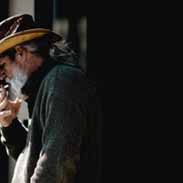Physio Organic Chemistry – Flashcards
Unlock all answers in this set
Unlock answersquestion
proton donors; ionize, dissociate, and release (H+) and a negative ion other than hydroxide (OH-) in water
answer
acids
question
proton acceptors of H+ and release OH-
answer
bases
question
measure of H+ concentration of a solution
answer
pH
question
helps prevent excessive changes in the pH of body fluids; releases H+ when pH is too high and binds to H+ when too low
answer
buffers
question
fat that contains a phosphate group in place of a fatty acid
answer
phospholipids
question
hydrogen to oxygen ratio of 2 to 1; building blocks of carbohydrates
answer
monosaccharides
question
hydrogen to oxygen ratio of 9 to 1
answer
triglyceride
question
no double bonds between carbon atoms holding all hydrogen atoms
answer
saturated fat in lipids
question
has double bonds between carbon atoms and hydrogen
answer
unsaturated fat in lipids
question
collagen, keratins, muscles
answer
structural proteins
question
enzymes, receptors, hemoglobin, antibodies, hormones
answer
functional proteins
question
inherited genes to make proteins
answer
DNA
question
used in protein synthesis to put together amino acids to make proteins
answer
RNA
question
constructed of four flat interlocking hydrocarbon rings and most important is cholesterol which stabilizes the cell membrane
answer
steroids
question
the unique sequence of amino acids that are linked by covalent peptide bonds to form a polypeptide chain
answer
primary structure of proteins
question
the repeated twisting or folding of neighboring amino acids in the polypeptide chain, which are stabilized by hydrogen bonds
answer
secondary structure of proteins
question
the three-dimensional shape of a polypeptide chain
answer
tertiary structure
question
the arrangement of the individual polypeptide chains relative to one another
answer
quaternary structure
question
the chief building materials of the body and are extended and strand like; linear, insoluble in water, and very stable; qualities are ideal for providing mechanical support and tensile strength
answer
fibrous/structural proteins
question
compact, spherical proteins that have at least tertiary structure; water soluble, mobile, and chemically active molecules
answer
globular/functional proteins
question
when a protein encounters an altered environment, which usually occurs as a result of heat or alcohol or acids and bases, it may unravel and lose its characteristic shape
answer
protein denaturation
question
part of an enzyme that catalyzes the reaction
answer
active site
question
they can only bind to specific substrates
answer
specificity of enzymes
question
they can catalyze reactions at extremely rapid rates
answer
efficiency of enzymes
question
CHONP
answer
organic compounds
question
H2O to combine
answer
dehydration synthesis
question
H2O splitting
answer
hydrolysis
question
apart of fat, contains 1 glycerol and 3 fatty acid chains and can be triglyceride or triglycerol
answer
lipids
question
contains two nitrogenous bases and one phosphate group, monomers are nucleotides, and two types are RNA and DNA
answer
nucleic acids
question
amount of adenine is equal to the amount of thymine and the amount of guanine is equal to the amount of cytosine
answer
Chargoff's Rule
question
the amino acid that has a single hydrogen atom as its side chain
answer
glycine
question
monomer is amino acid, and contains amino glycine along with amino acid
answer
proteins
question
contains polysaccharides, monosaccharides, and disaccharides
answer
carbohydrates
question
most catalysts are protein molecules called _________
answer
enzymes
question
the form of energy used by all of our cells
answer
Adenine Triphosphate (ATP)
question
what is the normal pH range for blood?
answer
7.35-7.45
question
about 85% of the cell is composed of organic compounds. defend or refute this statement.
answer
this statement is incorrect because 60% of the cell is made up of water



